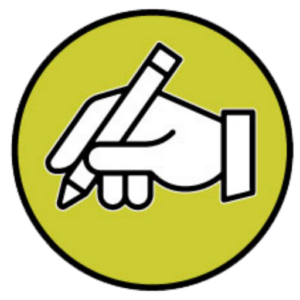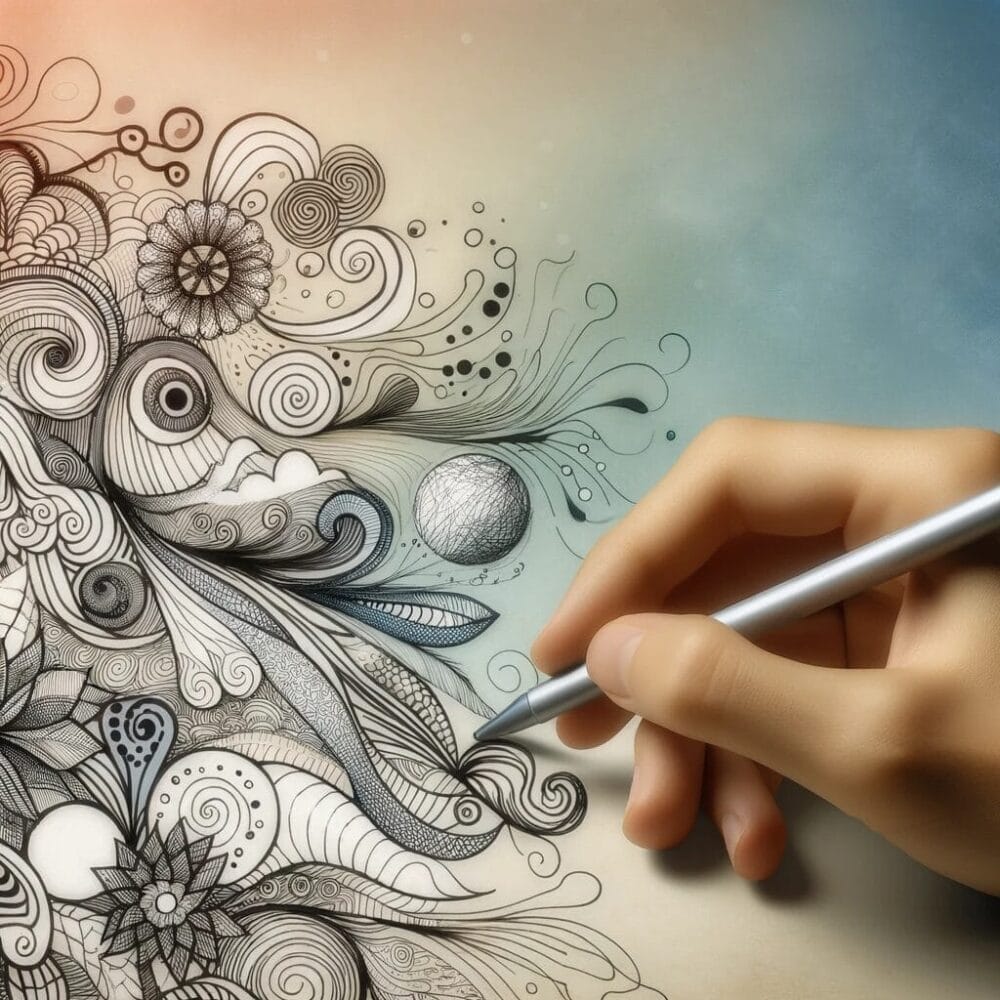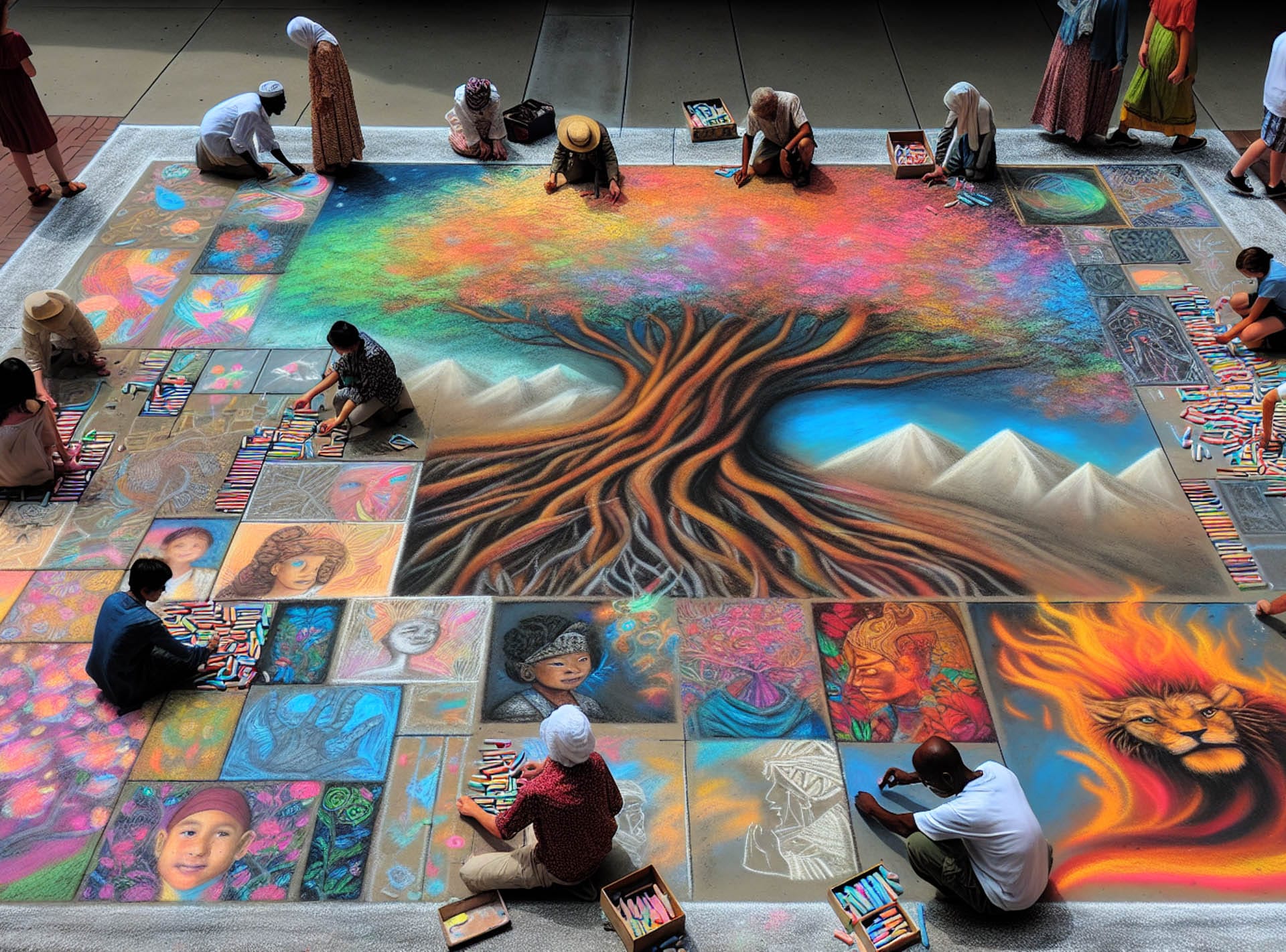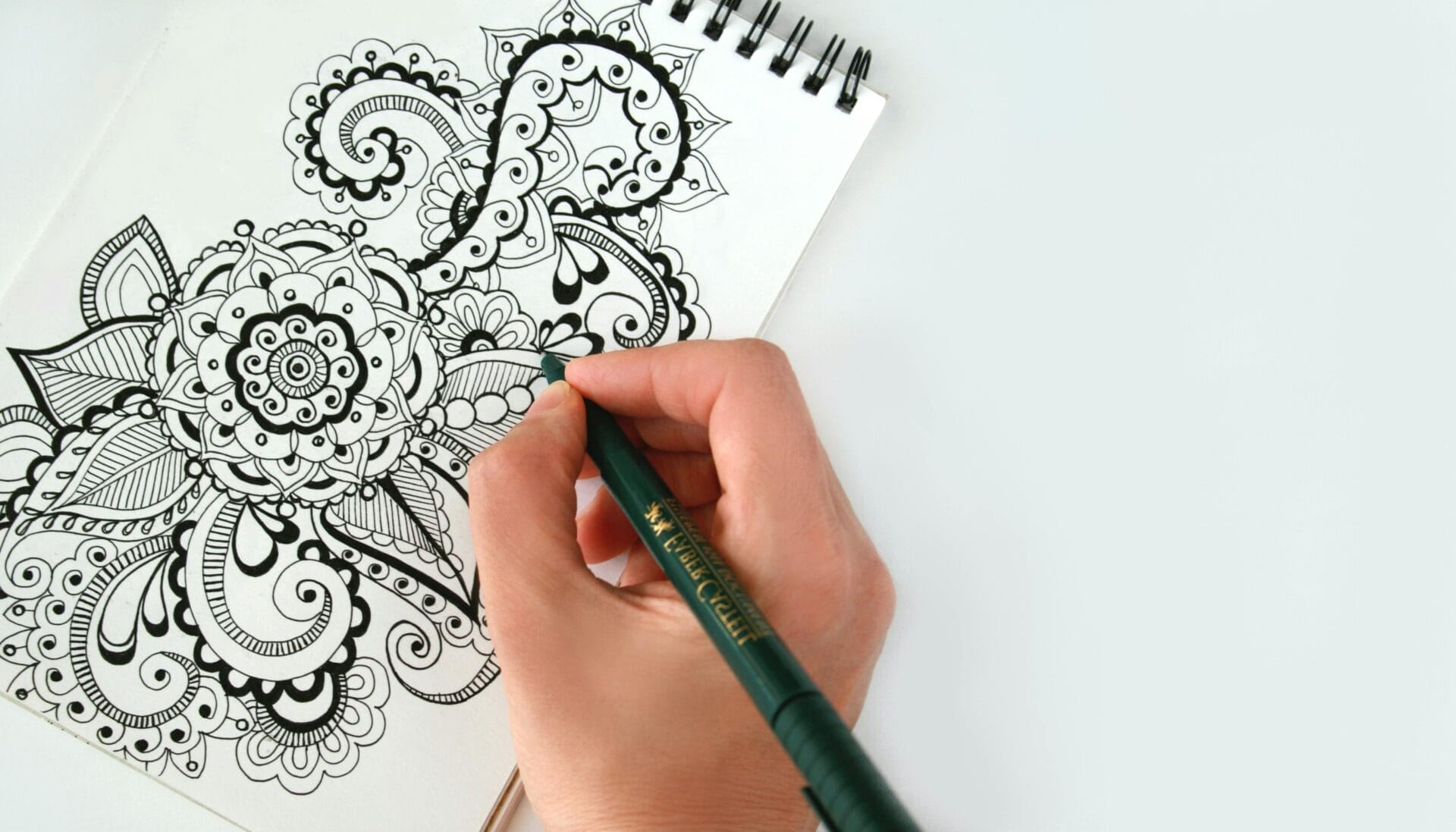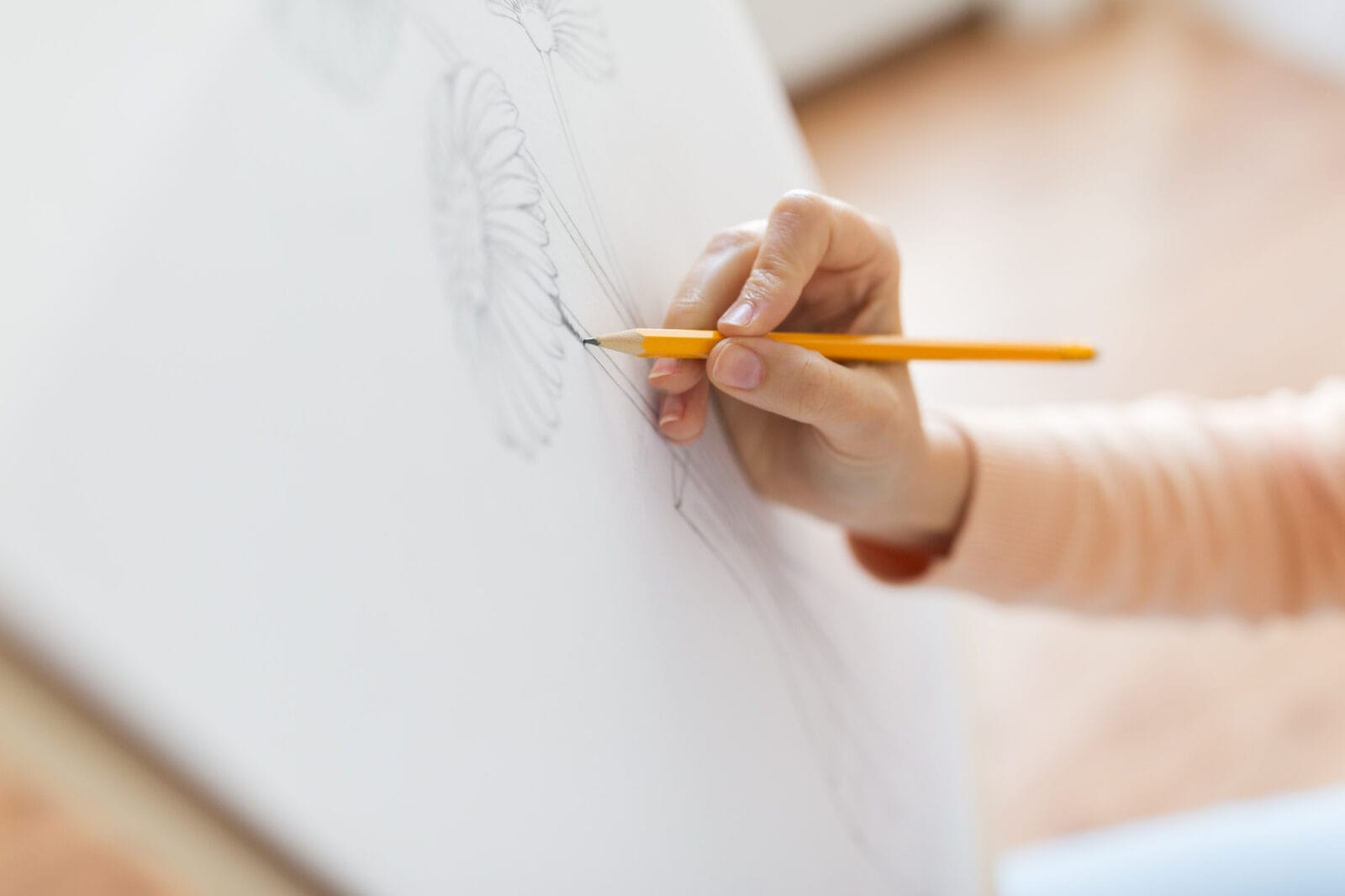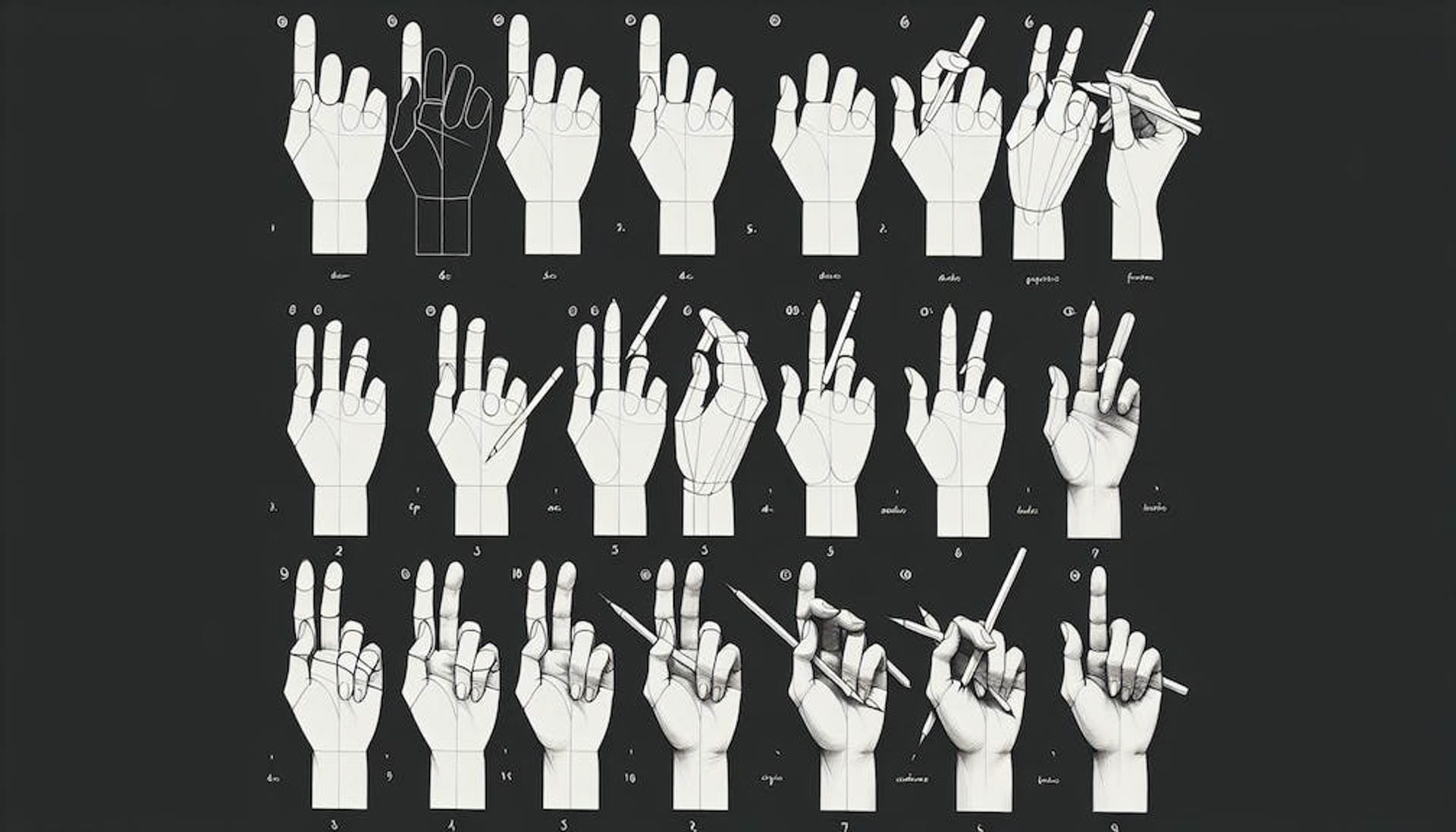Doodling is the act of making spontaneous and often unconscious drawings while your mind is preoccupied with other thoughts or tasks. It can range from simple shapes and lines to intricate patterns and designs. Doodling is a universal human activity that transcends age, culture, and artistic skill levels. Learn how to doodle freely and you will be well on your way to learning how to draw.
If you’re not sure you’ll benefit from the art of doodling, skim through this beginner’s guide of a few easy to follow steps, find your favorite pen to doodle, and soon that blank piece of paper will come to life with lines and shapes.
Introduction to Doodling: More Than Just Scribbles
Doodling, often mistaken as a trivial pastime, holds a hidden depth that intersects with psychological well-being and creativity. In a world where stress and mental overload are commonplace, doodling emerges as a simple yet potent tool for alleviating mental strain and fostering a sense of peace. This section delves into what makes doodling more than just random scribbles, exploring its inherent qualities that contribute to stress relief and mental rejuvenation.
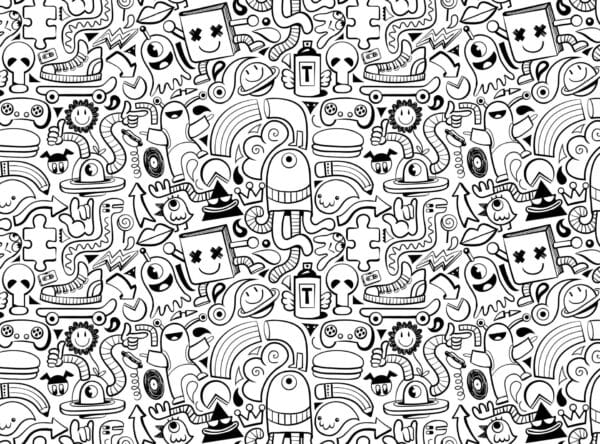
The Essence of Doodling
At its core, doodling is an instinctive, unstructured form of drawing that allows the mind to wander freely. This lack of constraints is precisely what imbues it with therapeutic properties. As doodles flow from pen to paper, they create a visual manifestation of the mind’s meanderings, often leading to surprising bursts of creativity and insight.
It matters little whether you think you don’t know how to doodle, you can still doodle flowers, doodle animals, draw food, or whatever pops into your head. Doodles are perfect for connecting your mind and body in a single subconscious activity.
A Gateway to Mindfulness
Doodling’s repetitive and rhythmic nature can turn it into a meditative practice. This process of creating spontaneous art can help anchor the mind in the present moment, a key aspect of mindfulness. By focusing on the act of drawing, doodlers can experience a reduction in stress and anxiety levels, as their attention shifts away from stressors and towards the calming motion of the pen.
Stress Reduction Through Expression
Doodling provides an outlet for emotional expression, often capturing feelings and thoughts that are hard to articulate in words. This form of non-verbal expression can be particularly beneficial for those who struggle with traditional forms of communication or emotional expression, offering a safe space for the release of pent-up emotions.
Cognitive Benefit
Studies have shown that doodling can also enhance cognitive function. These studies suggest that doodling can aid in concentration, information retention, and even problem-solving. By occupying parts of the brain that might otherwise be distracted, doodling can paradoxically lead to greater focus and clarity of thought.
Inclusivity and Accessibility
One of the most appealing aspects of doodling is its inclusivity. It requires no specialized skills or artistic talent, making it accessible to everyone. This universal accessibility ensures that anyone can benefit from its stress-relieving properties, regardless of their artistic ability.
Doodling, therefore, is not just a way to pass the time; it’s a gateway to relaxation, a tool for mindfulness, and a testament to the therapeutic power of art. As we continue to explore the multifaceted benefits of doodling, it becomes clear that these simple drawings hold the potential for profound impacts on mental health and well-being.
The Artistic Side of Doodling
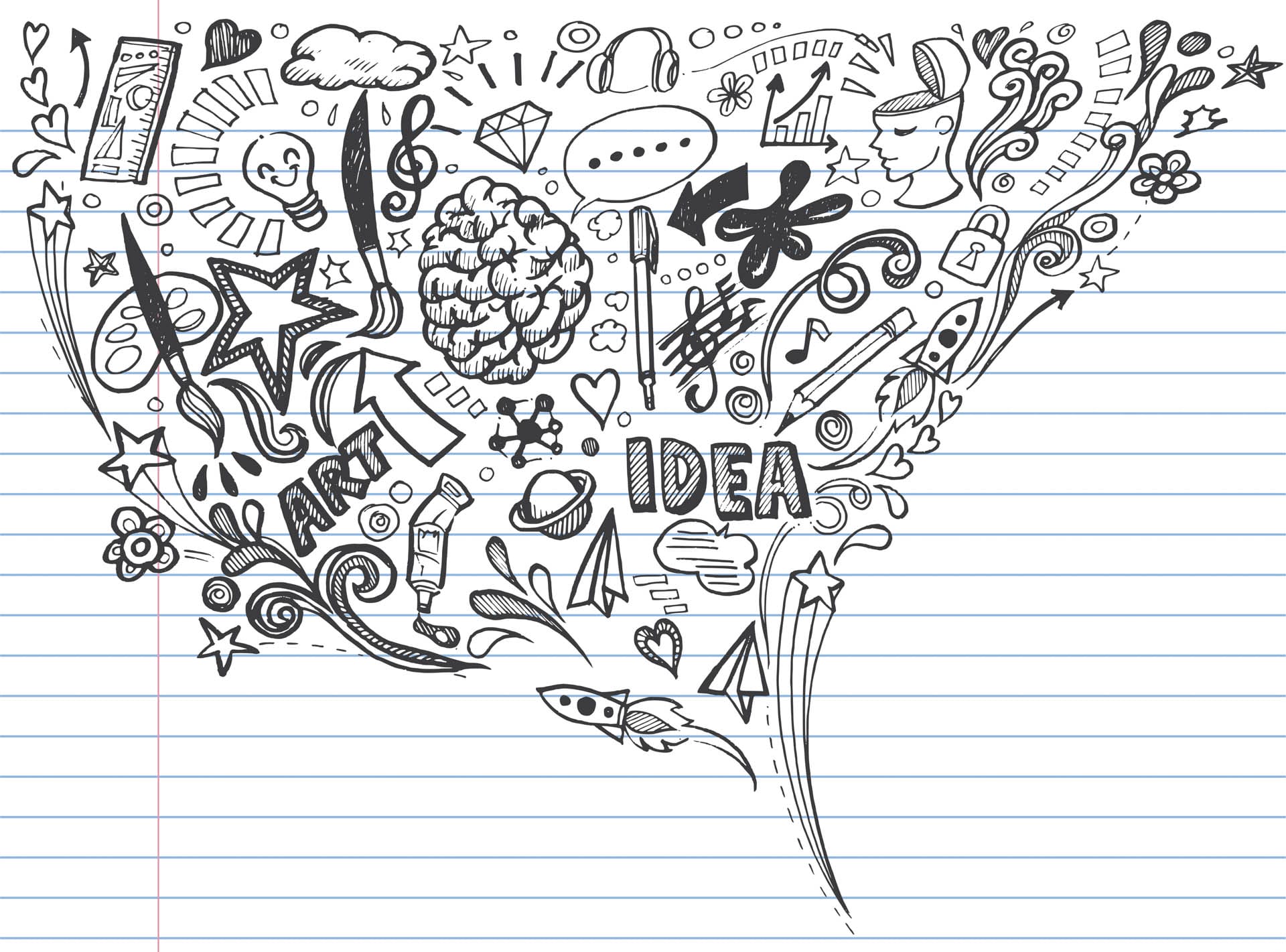
Many people view doodling as a simple pastime, but it’s much more than that. Doodling is a form of self-expression and a window into your subconscious mind. It allows you to unleash your creativity and explore your imagination freely. Some of the most innovative ideas and artworks have originated from doodles.
How to Doodle: Step-by-Step Guide
1. Start with Basic Shapes: Begin your doodle journey with basic shapes like circles, squares, and triangles. These serve as a foundation for more complex designs.
2. Add Details: Gradually add details to your shapes, turning them into objects, animals, or abstract forms.
3. Experiment with Patterns: Explore various patterns, such as spirals, zigzags, and waves, to add texture and depth to your doodles.
4. Incorporate Your Emotions: Let your feelings guide your doodles. Are you happy, sad, or excited? Use colors and shapes that reflect your emotions.
5. Doodle Freely: Remember, there are no rules in doodling. Don’t worry about making mistakes; embrace them as part of the creative process.
Finding Inspiration for Your Doodles

Inspiration for doodling can come from anywhere! Look around you, observe nature, architecture, or even everyday objects. You can also draw inspiration from your favorite artists, books, movies, or personal experiences.
What Do Doodles Mean?
Have you ever wondered what your doodles say about you? Doodles often reveal your inner thoughts, desires, and personality traits. While interpretations may vary, common symbols like hearts, stars, or eyes can provide insights into your subconscious mind.
Doodling as a Creative Outlet
Doodling serves as a fantastic creative outlet. It allows you to unwind, reduce stress, and improve focus. Many artists and professionals use doodling as a tool for brainstorming and problem solving.
Doodling Techniques: From Flowers to Patterns
- Doodling offers endless possibilities. You can explore various styles and techniques, such as:
- Floral Doodles: Create beautiful flowers, leaves, and vines in your drawings.
- Pattern Doodling: Explore intricate and repetitive patterns that can be both soothing and visually appealing.
Discovering Your Doodling Style
Your doodling style is as unique as your fingerprint. Embrace your individuality and don’t be afraid to experiment with different styles until you find what resonates with you.
Doodling in Different Art Forms
Doodling is not limited to pen and paper. It can be integrated into other art forms like painting, digital art, and even sculpture. Doodling can add a unique and personal touch to your artwork.
What Your Doodles Say About You
The symbols and patterns you frequently doodle can provide insights into your personality. While interpretations vary, understanding your doodles can be a fascinating journey of self-discovery.
The Science Behind Stress Relief Through Doodling
In understanding the therapeutic value of doodling, it’s important to delve into the science that underpins its stress-relieving qualities. This section examines the neurological and psychological mechanisms that make doodling an effective tool for combating stress and enhancing mental health.
Neurological Pathways to Relaxation: Doodling engages multiple areas of the brain, including those responsible for creativity, memory, and sensory processing. When we doodle, our brain enters a state similar to daydreaming, which activates neural pathways associated with relaxation and calmness. This process helps reduce the production of cortisol, the body’s primary stress hormone, promoting a sense of well-being.
Psychological Impact of Artistic Expression: The act of creating art, even in its simplest form like doodling, can be incredibly cathartic. Psychologists have found that engaging in artistic activities has a direct impact on our mood and emotional state. It allows for the expression of emotions that might be difficult to articulate verbally, providing a psychological outlet for stress and anxiety.
Enhancing Mindfulness and Focus: Doodling can also be a form of mindfulness practice. The focused attention on the physical act of drawing helps anchor the mind in the present moment, distancing it from stress-inducing thoughts and worries. This mindfulness aspect of doodling not only reduces stress but also improves concentration and cognitive abilities.
The Role of Creativity in Stress Management: Engaging in creative activities like doodling has been shown to boost brain function, enhance creativity, and improve problem-solving skills. This creative engagement provides a mental break from stressors, allowing individuals to return to their tasks with renewed energy and a fresh perspective.
Scientific Studies and Research Findings: Various studies have underscored the benefits of doodling. For instance, research has shown that doodling during tasks that require sustained attention can lead to better memory recall. Additionally, art therapy, which includes activities like doodling, has been effectively used in clinical settings to aid in the treatment of stress and anxiety-related disorders.
In summary, the science behind doodling’s stress relief capabilities lies in its ability to engage the brain in a relaxing, creative, and mindful exercise. As we uncover the layers of this seemingly simple activity, its profound impact on mental health becomes increasingly evident.
Style Your Doodles for Maximum Relaxation
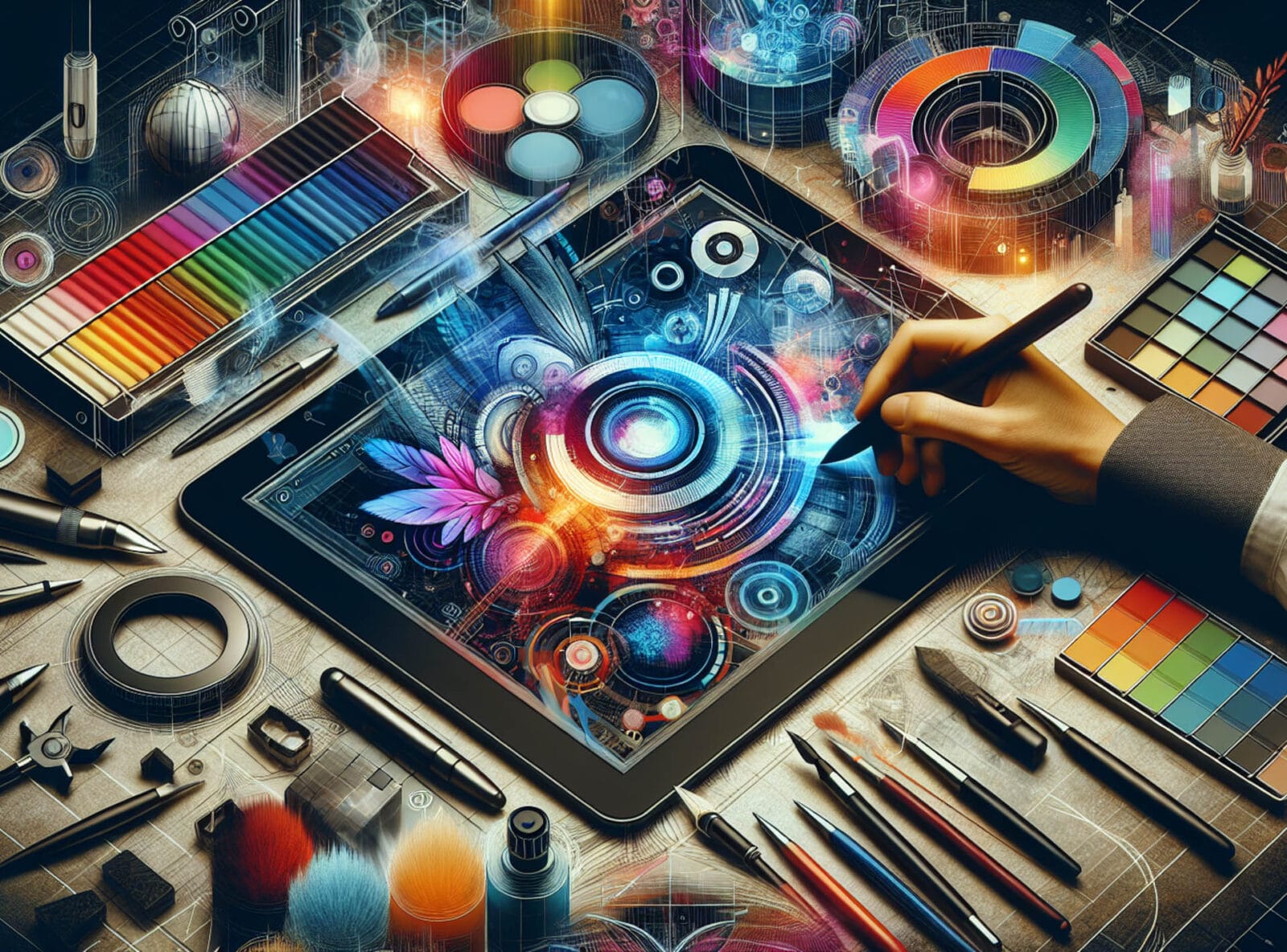
Doodling for stress relief isn’t just about putting pen to paper; it’s about the approach and techniques used that maximize its therapeutic benefits. This section explores various doodling styles and techniques that can enhance relaxation and mental wellness.
1. Freeform Doodling: The most basic and liberating form of doodling, freeform doodling involves letting your hand move freely without any preconceived plan. This technique can help in unleashing creativity and reducing mental barriers, allowing for a spontaneous flow of ideas and a release of stress.
2. Structured Doodling: For those who find comfort in order, structured doodling might be more appealing. This can include creating patterns, shapes, or even specific images. The repetitive nature of structured doodling, such as drawing mandalas or geometric patterns, can be particularly soothing and meditative.
3. Zentangle Art: Zentangle is a method of creating beautiful images from repetitive patterns. It’s easy to do and can be very relaxing. The deliberate focus required in creating these patterns can help in achieving a state of mindfulness, redirecting thoughts away from stressors.
4. Nature-Inspired Doodling: Drawing inspiration from nature, such as leaves, flowers, or landscapes, can be particularly calming. Nature-inspired doodles connect us to the natural world, which is inherently soothing and can enhance our emotional and mental well-being.
5. Colorful Doodling: Incorporating colors into doodling can amplify its stress-relieving properties. Different colors can evoke various emotions and moods; for instance, blues and greens are often found to be calming and relaxing.
6. Collaborative Doodling: Engaging in doodling with others, whether in a group setting or online, can add a social dimension to the activity. Sharing and seeing others’ work can be inspiring and add a sense of community and support.
Each of these techniques offers a unique way to engage with doodling and can be tailored to individual preferences and needs. Experimenting with different styles can not only enhance the enjoyment of doodling but also optimize its benefits for stress relief and mental health.
Real-Life Benefits of Doodling
In this section, we explore some real-life stories that highlight the transformative power of doodling in managing stress and enhancing mental well-being. These narratives offer a human perspective on how a simple act of drawing can have a profound impact on individuals’ lives.

The Corporate Employee
Meet Sarah, a corporate employee who discovered doodling during long, stressful conference calls. What started as absent-minded scribbling soon became a deliberate practice. She found that doodling helped her focus and retain information, reducing her overall stress levels and improving her work performance.
The College Student
Alex, a college student, began doodling to cope with academic pressure. He noticed that doodling during lectures helped him concentrate and remember key concepts better. It became a valuable tool for combating anxiety and boosting his studying process.
The Healthcare Professional
Dr. Lee, a healthcare professional, uses doodling as a way to unwind after intense workdays. The act of doodling intricate patterns allows her to transition from the high-stress environment of the hospital to a more peaceful mental state, aiding in her emotional regulation and resilience.
The Art Therapist
Emily, an art therapist, incorporates doodling in her sessions. She has witnessed firsthand the benefits it brings to her clients, especially those dealing with anxiety and depression. Doodling, she notes, offers a non-threatening medium for self-expression and emotional exploration.
The Stay-at-Home Parent
David, a stay-at-home dad, turned to doodling as a way to find moments of peace in his busy day. It became a practice of self-care and relaxation, helping him to manage the challenges of parenting with greater calmness and patience.
These stories underscore the versatility of doodling as a tool for stress relief, applicable across various ages and professions. They demonstrate that regardless of one’s background or situation, doodling can be an effective and accessible means to enhance mental well-being.
Incorporating Doodling into Daily Life for Ongoing Stress Management
In this concluding section, we provide practical advice on how to integrate doodling into everyday routines as a sustainable stress management tool. By making doodling a regular practice, individuals can harness its therapeutic benefits to enhance their overall mental wellness.
- Creating a Doodling Habit
Start by setting aside a few minutes each day for doodling. It can be as simple as doodling while on a phone call or taking a short break during work. The key is consistency and making it a part of your daily routine. - Keeping Materials Accessible
Have a doodle pad and a set of pens or pencils handy at your desk, in your bag, or by your bedside. The easier it is to access your doodling materials, the more likely you are to doodle spontaneously. - Using Doodling for Mindful Breaks
Incorporate doodling into your mindfulness practice. Use it as a way to take a break from screens or as a transition activity between different tasks. This can help clear your mind and reduce feelings of overwhelm. - Doodle During Waiting Times
Utilize moments of waiting, like in queues or while commuting, to engage in doodling. This can turn potentially stressful idle time into an opportunity for creativity and relaxation.
Sharing and Reflecting on Your Doodles
Consider keeping a doodle journal to track your progress and thoughts. Sharing your doodles with friends or on social media can also be a fun way to connect with others and gain inspiration.
By adopting these simple practices, doodling can become more than just a hobby; it can evolve into a valuable tool for managing stress and enhancing your mental health. With its ease of access and universal applicability, doodling offers a unique and creative path to achieving a more balanced and serene state of mind.
The Psychology of Doodling
Psychologists have long been intrigued by the therapeutic and cognitive benefits of doodling. It can improve memory, aid in concentration, and help individuals process complex information.
So, what’s happening in our brains when we doodle? Typically, it occurs due to boredom, frustration, or the need to relieve stress. Experts liken doodling to a safety valve, providing a means to release pressure harmlessly. But there’s more to it than meets the eye.
Firstly, doodling offers a window into our subconscious, potentially revealing unexplored concepts and ideas. Additionally, it provides a breather for certain brain processes while activating others that can be more beneficial. In the following sections, we’ll delve into how doodling impacts the cognitive workings of the brain.
How Can I Overcome Self-doubt When Doodling?
To overcome self-doubt when doodling, you can consider the following strategies:
- Acknowledge and Address Feelings: Acknowledge your self-doubt and take steps to address it. This can include taking a break, going for a walk, or engaging in activities that recharge your creative self.
- Clarify Your Goals: Get clear about what you are feeling uncertain about and identify the specific goals you would like to achieve with your doodling. This can help you focus and gain a sense of direction.
- Focus on the Process, Not the Outcome: Instead of fixating on the quality of your art, focus on the joy of the creative process. Embrace the act of doodling as a form of self-expression and a way to explore your creativity.
- Learn from Others Without Comparing Yourself: Recognize that feelings of doubt or envy are natural, and see them as an opportunity to gain knowledge from other artists rather than as a reason to doubt your abilities. Finding your voice as an artist is crucial.
- Reward Yourself for Taking Action: Celebrate the act of doodling itself, regardless of the perceived quality of the outcome. Reward yourself for engaging in the creative process and making progress, rather than solely focusing on the result.
By implementing these strategies, you can work to overcome self-doubt and cultivate a more positive and confident approach to your doodling.
How Can I Overcome Creative Blocks When Doodling?
To overcome creative blocks when doodling, you can try the following strategies:
- Fill Pages with Doodles: Filling pages with doodles can help overcome creative blocks. This approach allows you to focus on the process rather than the outcome, which can free up your creativity.
- Reframe Your Mindset: Shifting your perspective and beliefs around creativity is important. Instead of aiming for perfection, focus on having fun with your favorite tools and prioritize your wellness and art time.
- Draw from Life: Drawing everyday objects in unusual ways or creating art inspired by music lyrics can help spark creativity and overcome a block.
- Revisit Previous Artwork: Looking through your old artworks may help you find unfinished ideas that you can now develop further, or you may have acquired new skills that can be applied to old pieces.
- Exercise or Yoga: Engaging in physical activities like exercise or yoga can improve blood flow and oxygen to the brain, which in turn can help unlock an artist’s block.
Remember, creativity is a seed you’re born with, and it never dies. It can lay dormant for a long time, but with the right mindset and practice, you can overcome creative blocks and unlock your artistic potential.
Famous Doodlers Throughout History
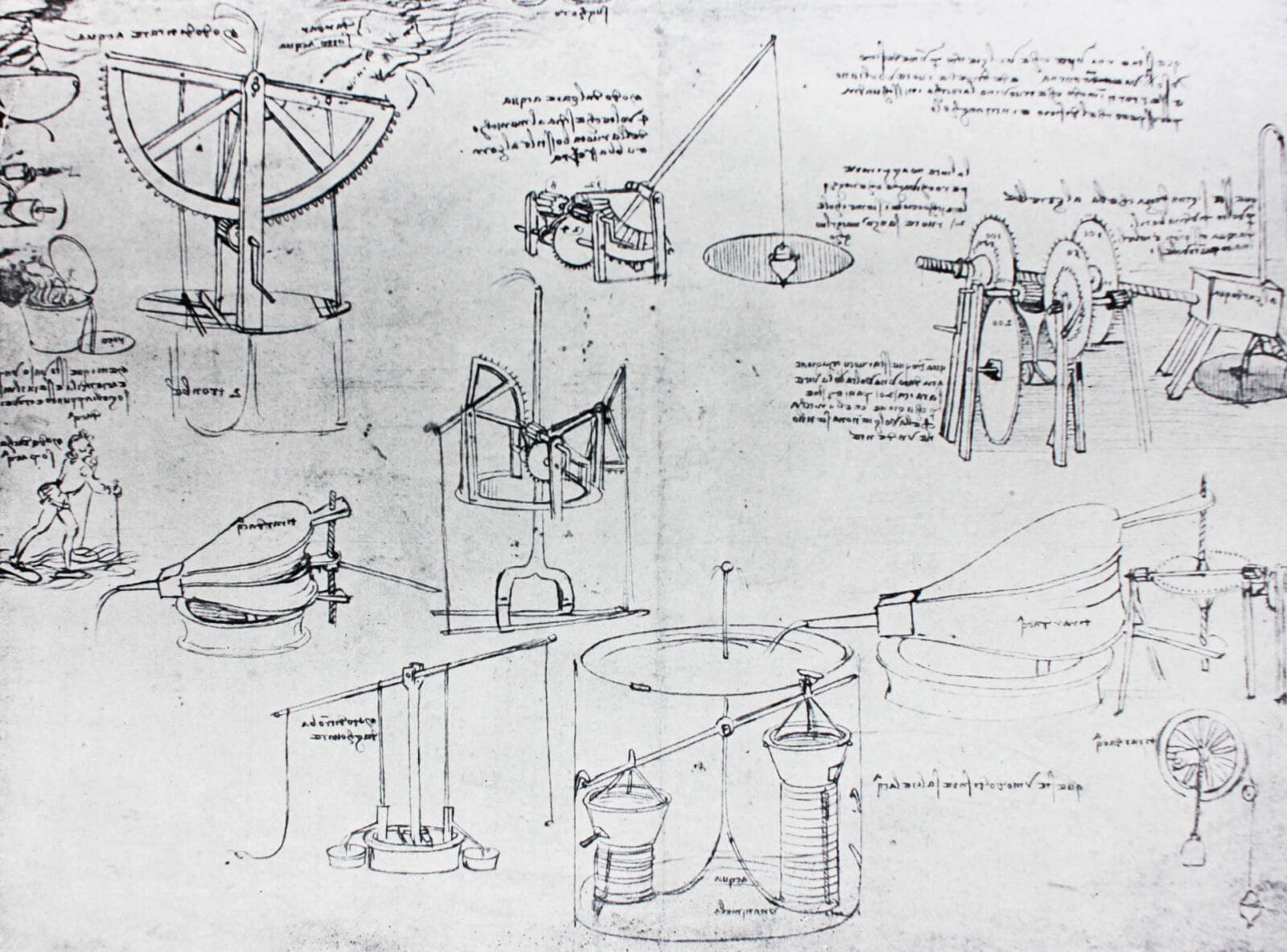
Even some of the most renowned figures in history were avid doodlers. From Leonardo da Vinci to Albert Einstein, doodling played a role in their creative processes.
During a United Nations Security Council meeting, Hilary Clinton was seen doodling while discussions on global security and the Middle East unfolded. Some interpreted this as a sign of inattention, but there’s more to it.
Her scribbles weren’t just random. They hid a world of creativity and contemplation. Surprisingly, doodling has benefits. Recent research shows that it can boost creativity, productivity, focus, and mood. So, those seemingly idle sketches might not be as unimportant as they seem.
Conclusion: Embrace the Doodler Within You
In conclusion, doodling is not just a simple pastime; it’s a powerful creative tool that can enhance your artistic skills, relieve stress, and provide valuable insights into your inner self. So, embrace your inner doodler and let your imagination flow freely on paper. Happy doodling!
FAQs
Q1: What do my doodles mean?
A1: The meaning of your doodles can be personal and subjective. They often reflect your thoughts, emotions, and personality.
Q2: Can anyone learn how to doodle?
A2: Absolutely! Doodling is an accessible and enjoyable form of art that anyone can become proficient with practice and patience.
Q3: Are there specific materials for doodling?
A3: Doodling can be done with basic materials like paper and a pen, but you can also explore digital doodling with tablets and styluses.
Q4: Can doodling help with anxiety and stress?
A4: Yes, many people find that doodling helps reduce anxiety and stress by providing a soothing and creative outlet.
Q5: How can I improve my doodling skills?
A5: Practice regularly, experiment with different styles and techniques, and don’t be afraid to make mistakes. Improvement comes with time and dedication.
